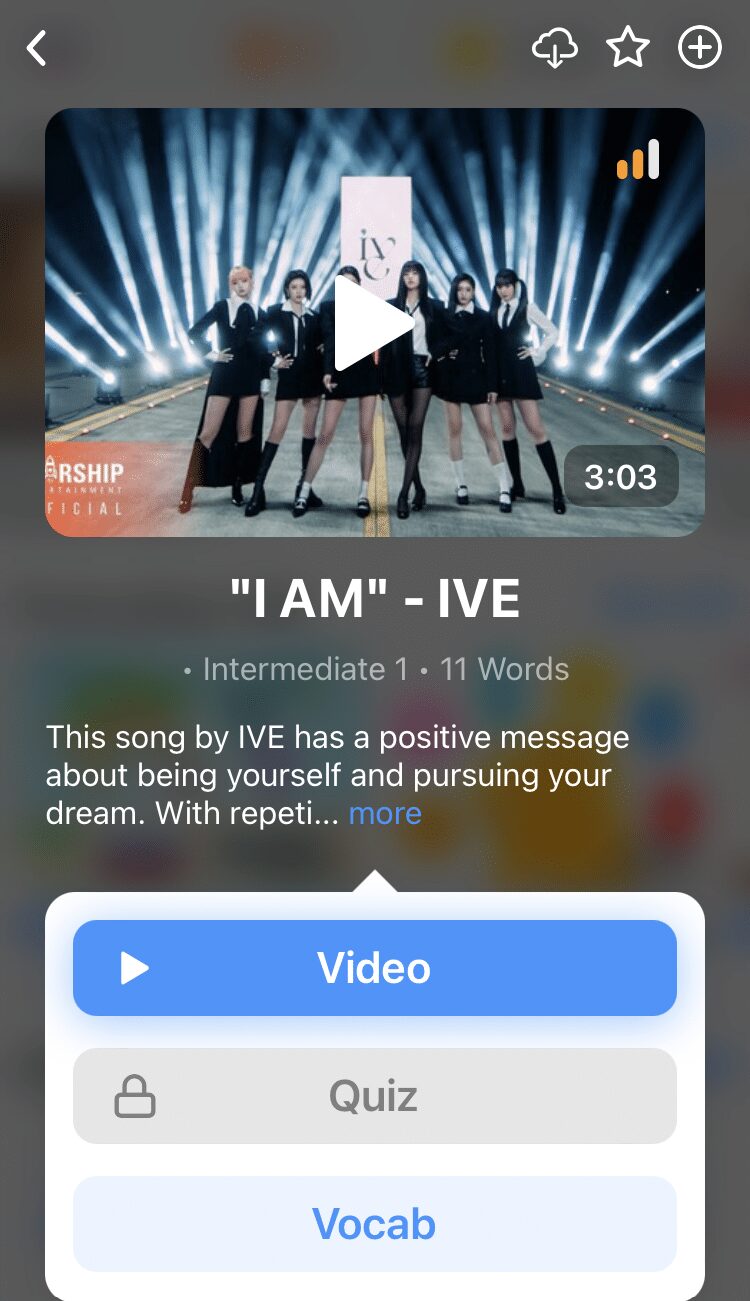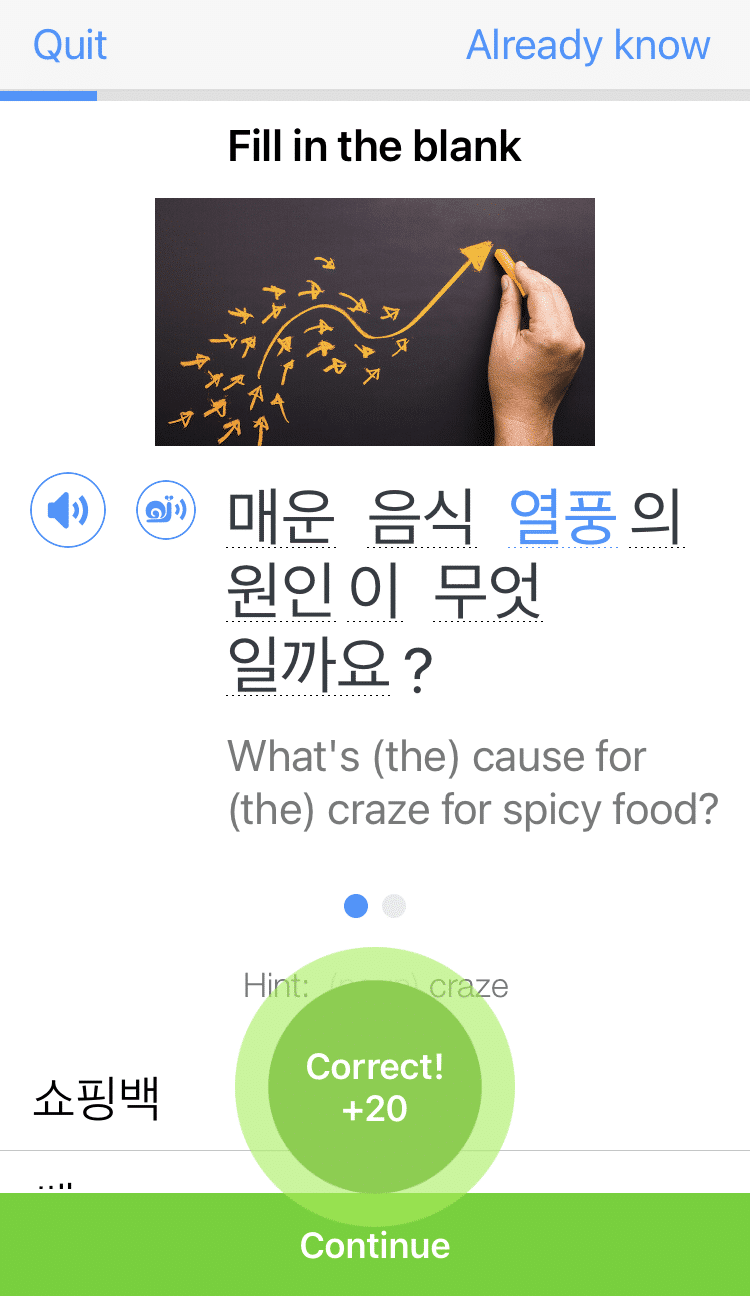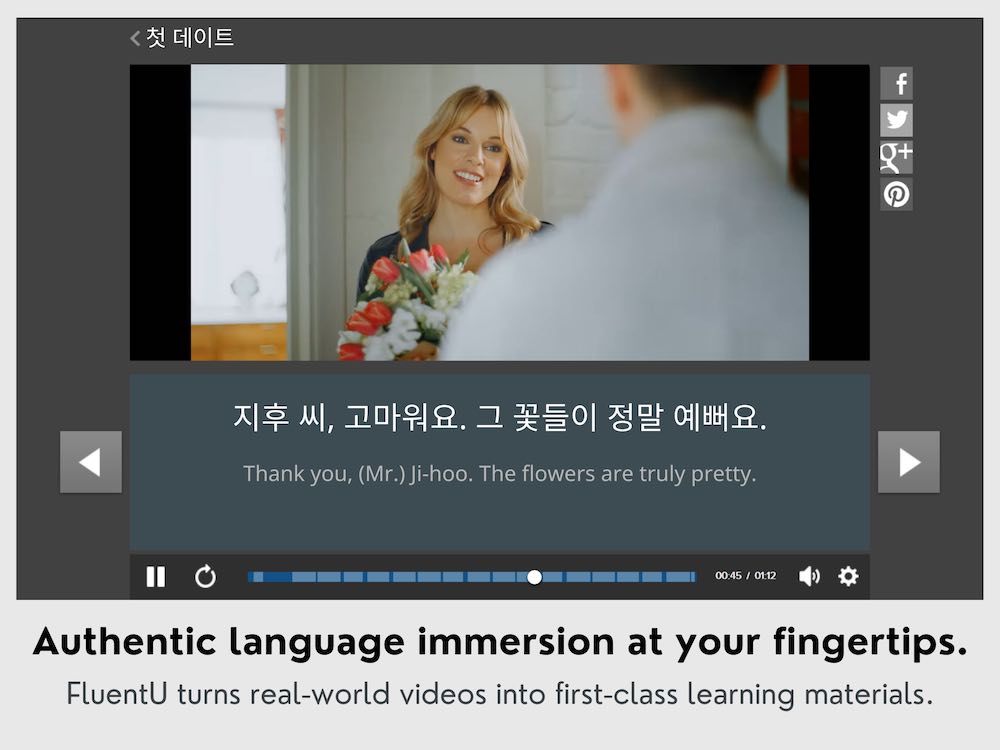How to Learn Korean with Subtitles [5 Techniques]

Hallyu, also known as the Korean Wave, is taking the world by storm. This is lucky, since even something like watching TV or movies can actually help you learn the language.
The way to do this is by turning to the most underestimated Korean learning tool out there: Subtitles. Keep reading to find out how you can learn Korean with subtitles with five key techniques.
Download: This blog post is available as a convenient and portable PDF that you can take anywhere. Click here to get a copy. (Download)
How to Improve Your Korean with Subtitles
There are three major ways you can utilize videos and subtitles.
- Watch Korean-language videos with English subtitles: This is probably the most common way to do it if you’re a beginner or aren’t comfortable with the language. Doing this can help you practice your reading, listening and speaking skills. At some point (perhaps after many re-watches), you might find that you don’t need the subtitles anymore. If so, then challenge yourself by switching them off and seeing how much of the video you understand.
- Watch English-language videos with Korean subtitles: This will test your reading skills as you match the English with the translated Korean. You also have the option to ignore the audio altogether to see if you can figure out what’s happening by the subtitles alone!
- Watch Korean-language videos with Korean subtitles: This will be the ultimate test of knowledge as you navigate in complete Korean. However, you’ll be honing reading, writing and listening skills—full exposure to the language. You can do this when you feel comfortable enough with the language.
To make the most out of the above methods, try implementing the following five techniques.
1. Stop and rewind
Pause the video frequently so you can take notes on the Korean vocabulary or phrases that were just used. Pluck them apart so that you understand the underlying grammar, as well as how the sentence was structured overall. If you’re watching a Korean video, rewind and listen once more so you can either hear the pronunciation or practice speaking the words yourself.
This practice is simple, but powerful. The first time you watch a video, you may get the gist of what was said before forgetting about it within the next few seconds. However, just as re-watching your favorite movie acquaints you with its entire script, viewing a Korean video can also familiarize you with the Korean words and vocabulary used. All that’s really needed is for you to actively pick them apart.
So keep your hand on that pause button and be ready to dissect the content!
2. Keep your dictionary open
In line with the first technique, you’ll want to have some kind of dictionary or resource available so that you can look up words you don’t understand.
Some dictionaries let you search up entire phrases as well, such as Naver’s online dictionary. Looking up phrases as opposed to individual words can be greatly beneficial, as it shows you how things are plugged together, as well as exceptions to the general rules.
Don’t be discouraged if you find yourself having to check for definitions often—if anything, you’re gaining much more by doing so! Remember too that you can write down those unfamiliar words, or even better, make flashcards out of them so you can review them even when you’re not watching the video.
3. Speak and repeat
Don’t let the actors be the only ones talking. Practice your own speaking skills by repeating the Korean you heard (or read). You can also attempt to recreate the accents.
Why practice accents? Accents can be quite crucial when you want natives to understand you as you speak their language. In many cases, even if you know a lot of vocabulary, the way you enunciate words can still cause some confusion to native speakers.
The way to remedy this is by practicing your pronunciation, which you can do by parroting what you hear. Even if you don’t understand everything that was said, you at least familiarize yourself with Korean diction and intonation.
4. Turn subtitles on and off
If you’re going to watch a Korean-language video, glance away from or disable subtitles to really challenge your comprehension. This drives the point that your motivation for watching isn’t just to entertain yourself!
You can have your initial viewing of the video with no subtitles, or disable them after watching the video one or more times. Either way, you’ll be more alert as your brain tries to navigate through the Korean language.
5. Diversify the content you watch
From videos alone, you can be exposed to a huge spectrum of Korean culture. This also means that you’ll be encountering the language in a variety of contexts.
Be adventurous and search for videos in which you expect very different audio or use of the language. This can mean dabbling in different genres or checking out different forms of visual media.
By doing so, you’ll be exposed to a greater range of Korean. For example, you can learn how the same vocabulary is used in starkly different scenarios, or learn entirely new bits of the language exclusive to certain situations. You’ll probably hear some very different things in a sitcom show versus a mystery film.
With diversity, you keep your education dynamic, not static, and also add a lot of vigor and flavor to your learning!
Where to Find Subtitled Korean Videos
You can find plenty of Korean dramas from sites dedicated to spreading that Korean Wave worldwide, such as Viki.
Dailymotion also has a surprisingly nice variety of Korean dramas, TV shows and movies.
If you’re more into movies, you can’t go wrong with Netflix. It luckily has a great line-up of foreign films, Korean included!
Reliable, old YouTube also hosts a good number of Korean videos. Some of them may not be subtitled, but many are, so shuffle through and see what you can find. You’ll probably be pleasantly surprised at the range of entertainment you can encounter.
Note that the YouTube subtitles are often automatically generated and, therefore, flawed. For a more reliable source of subtitles, FluentU is one resource to try.
FluentU takes authentic videos—like music videos, movie trailers, news and inspiring talks—and turns them into personalized language learning lessons.
You can try FluentU for free for 2 weeks. Check out the website or download the iOS app or Android app.
P.S. Click here to take advantage of our current sale! (Expires at the end of this month.)
Alternatively, you can look up subtitles for certain videos by going to Google or Naver and adding 자막 (subtitles) to the end of what you’re searching. For example, if you want to find a subtitled version of the movie “X-Men Apocalypse,” you’ll type “X-Men Apocalypse 자막.”
A Note of Advice on Learning Korean with Subtitles
With all the pluses of learning Korean with subtitles, there are also some unique situations you might run into along the way.
- When the act of watching overrides the act of learning, it’s easy to give up being an “active listener” and instead just read subtitles. It’s not hard to get distracted when you’re caught up in the video’s content itself! However, don’t forget your alternate motive for watching—there’s supposed to be some challenge involved, so when you start realizing that your eyes are doing more work than your brain, step right back into study mode!
- To that end, try to avoid using subtitles as a crutch. It’s fine to focus on them in the beginning, but wean off them as you learn more Korean. Try to hone your ear instead and pick up on the words you do know, identifying those you don’t so you can figure them out afterwards. One way to avoid over-dependence on subtitles is to switch them off entirely for a while.
- Be wary of adapted or inaccurate translations. This problem can be a little subtle and hard to pick up, especially when you’re a beginner. However, when you get better at Korean, you’ll probably notice that some translations seem off or almost “too convenient” for English-speakers. That’s to be expected, especially since foreign languages have unique vocabulary that can’t be translated perfectly. Just keep an eye out, and perhaps jot down the words that you feel would be helpful to look up afterwards.
When it comes to learning a new language, there are plenty of fun and interesting avenues you can take to build up your skills.
With that in mind, you’ll find that being an active watcher of Korean videos, as well as a critical analyzer of subtitles, will be an intriguing way to boost your knowledge of the culture and language.
Download: This blog post is available as a convenient and portable PDF that you can take anywhere. Click here to get a copy. (Download)
And One More Thing...
If you enjoyed this post, you're already halfway to having the time of your life learning Korean with FluentU!
FluentU makes it possible to learn with K-pop videos, funny commercials, entertaining web series and more. Just a quick look will give you an idea of the variety of FluentU videos on offer:

FluentU really takes the grunt work out of learning languages, leaving you with nothing but engaging, effective and efficient learning. It's already hand-picked the best videos for you (which are organized by level and topic), so all you have to do is simply choose any video that strikes your fancy to get started.
Each word in the interactive captions comes with a definition, audio, image, example sentences and more.

Access a complete interactive transcript of every video under the Dialogue tab, and easily review words and phrases from the video under Vocab.

You can use FluentU’s unique Quiz Mode to learn the vocabulary and phrases from the video through fun questions.

FluentU keeps track of what you're learning, and tells you exactly when it's time for review, giving you a 100% personalized experience.
Review sessions use video context to help embed the words in your memory.
Start using the FluentU website on your computer or tablet or, better yet, download the FluentU app from the iTunes or Google Play store. Click here to take advantage of our current sale! (Expires at the end of this month.)








